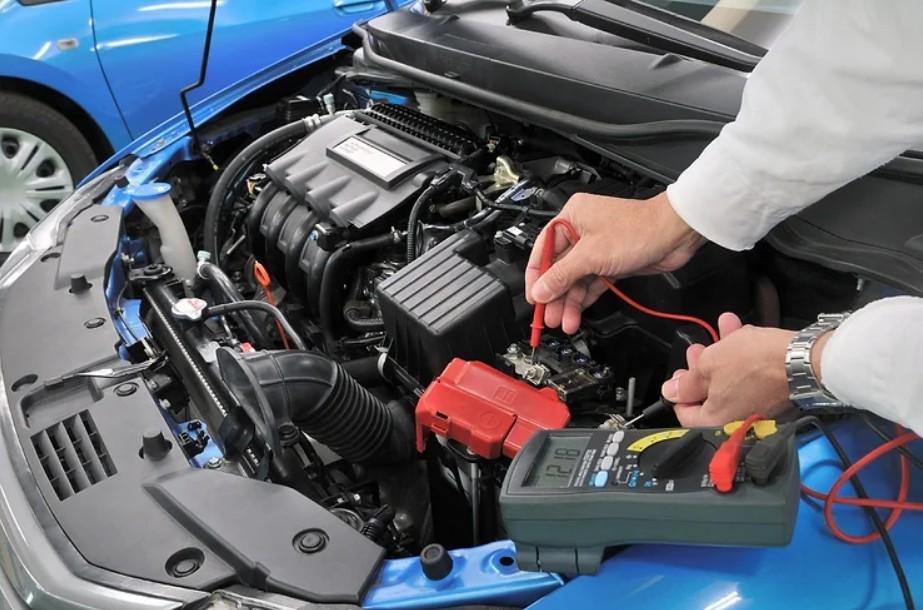What Are the Common Causes of Electrical Shorts in Car Wiring?

When it comes to vehicle maintenance, one of the most frustrating issues car owners face is electrical shorts. These can cause anything from flickering lights to complete system failures. Understanding what causes these shorts can help prevent costly repairs and ensure your car runs smoothly. In this article, we’ll explore the most common causes of electrical shorts in car wiring, how to detect them, and what steps you can take to fix or avoid them.
1. What Is an Electrical Short in a Car?
An electrical short occurs when electricity flows through an unintended path instead of its proper circuit. In a vehicle, this usually means the electrical current finds a shortcut to the ground, bypassing its designated route. This can lead to blown fuses, malfunctioning components, or even fires in extreme cases.
For instance, if a wire’s insulation wears down and exposes the metal conductor, it might touch another wire or metal surface. This contact allows current to flow where it shouldn’t, creating a “short.” Understanding how your car’s electrical system works is the first step to diagnosing these issues. That’s why individuals interested in learning car wiring fundamentals often consider enrolling in a Basic Electrician Course to gain practical, hands-on knowledge of electrical systems.
2. Worn or Damaged Insulation
One of the most frequent causes of electrical shorts is worn or damaged wire insulation. The insulation serves as a protective layer around electrical wires, preventing them from touching other conductors or the car’s body. Over time, heat, friction, and exposure to engine oil or moisture can deteriorate this protective coating.
When insulation wears off, the exposed wire becomes a hazard. Even slight vibrations from driving can cause it to come into contact with metal parts, leading to a short circuit. Checking wiring harnesses regularly and replacing damaged sections promptly can prevent serious electrical issues.
3. Poor Installation or Modifications
Many car owners like to install new lighting systems, sound systems, or other electrical accessories. While these upgrades can enhance a car’s appeal, improper installation often leads to electrical shorts. If new wiring isn’t properly insulated, secured, or grounded, it can interfere with existing circuits.
For example, a poorly installed aftermarket stereo may have wires running across sharp metal edges, gradually wearing down insulation. Over time, this can create direct contact between the wire and the car’s metal frame, resulting in a short. Proper installation techniques—like using grommets, electrical tape, and correct wire gauges—are essential. Individuals who take a Basic Electrician Course learn about safe wiring practices and the importance of electrical safety standards, which apply both to buildings and vehicles.
4. Corrosion and Moisture Intrusion
Another common culprit behind shorts in car wiring is corrosion caused by moisture intrusion. Water can enter electrical connectors or fuse boxes, especially in humid environments or after heavy rain. Once moisture gets in, it leads to oxidation and corrosion, which disrupts the flow of electricity.
Corroded connectors can cause high resistance and, in severe cases, allow unintended current paths to form. These shorts may not immediately blow a fuse but can result in intermittent problems, like dim lights or dashboard warning signals. Regularly inspecting electrical connectors, sealing open terminals, and ensuring proper grounding can help avoid corrosion. Knowledge from a Basic Electrician Course can help car owners or technicians understand how environmental factors affect electrical conductivity and insulation integrity.
5. Rodent Damage or Physical Wear
Believe it or not, rodents like rats and squirrels often find car engine compartments to be warm and cozy places to nest. Unfortunately, they also tend to chew on electrical wiring, leading to exposed copper wires and shorts. Physical wear can also occur from constant vibrations or improper routing of wiring harnesses near moving engine parts.
This type of damage is harder to spot unless you know what to look for. Regular inspections can help you catch early signs like bite marks, frayed wires, or missing insulation. In cases of rodent-related damage, technicians trained in the Basic Electrician Course understand how to identify affected circuits and repair them without causing further harm to the electrical system.
6. Overloaded Circuits or Faulty Components
Sometimes, electrical shorts occur not because of damaged wires but due to overloaded circuits or defective components. Every car circuit is designed to handle a specific amount of electrical current. When too many accessories draw power from a single source, it can overheat the wires and melt insulation, resulting in a short circuit.
Similarly, components such as alternators, batteries, or voltage regulators can fail internally and cause power surges. These surges may blow fuses repeatedly or cause wiring to burn. Avoid connecting high-current devices without proper relays and fuses, as they help distribute power safely.
7. Signs of an Electrical Short in Your Car
Recognizing early warning signs can save you from major electrical damage. Some common indicators include blown fuses, malfunctioning lights, burning smells, or flickering dashboard indicators. In severe cases, you might experience complete failure of electrical components like power windows or the ignition system.
A good diagnostic approach involves isolating the affected circuit and checking for continuity using a multimeter. It’s also wise to refer to your vehicle’s wiring diagram to locate the problem area. Learning how to use diagnostic tools safely and efficiently is part of most Basic Electrician Courses, which teach students how to troubleshoot and fix real-world electrical issues systematically.
8. How to Prevent Electrical Shorts in Car Wiring
Preventing electrical shorts is far easier—and cheaper—than repairing them. Start by inspecting your car’s wiring system regularly. Look for cracked insulation, exposed wires, or signs of overheating. Ensure all electrical modifications are done using proper tools and materials.
Avoid running wires near sharp edges or high-temperature areas without protection. Using heat-resistant tubing or wire looms can extend the lifespan of your car’s electrical components. Keeping the vehicle’s interior dry and clean also minimizes corrosion risks.
Conclusion
Electrical shorts in car wiring can be tricky to diagnose but understanding their root causes makes prevention much easier. From worn insulation and corrosion to improper installations and overloaded circuits, several factors can lead to short circuits. Regular inspections, safe installation practices, and a good understanding of electrical fundamentals are the keys to keeping your car’s wiring system healthy.
If you’re passionate about learning how electrical systems work and want to develop practical repair skills, consider enrolling in the Basic Electrician Course offered by Training Tale. It’s an excellent starting point for anyone looking to understand, diagnose, and fix real-world electrical issues—whether in homes, workshops, or vehicles.





